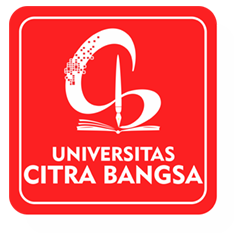PERANCANGAN SISTEM INFORMASI MONITORING HASIL BELAJAR SISWA TK KRISTEN CITRA BANGSA
Perancangan Sistem Informasi Monitoring Hasil Belajar Siswa TK Kristen Citra Bangsa
Keywords:
E-Raport, Model Prototype, Sistem InformasiAbstract
Penelitian ini bertujuan untuk mengetahui perancangan database pada sistem monitoring hasil belajar siswa pada TK Kristen Citra Bangsa, mengetahui perancangan data flow diagram sistem monitoring hasil belajar siswa pada TK Kristen Citra Bangsa dan mengetahui penggunaan sistem monitoring hasil belajar siswa pada TK Kristen Citra Bangsa. Metode penelitian yang digunakan adalah penelitian dan pengembangan dengan pengembangan sistem model prototype. Data hasil penelitian diperoleh berdasarkan pembagian kuesioner terhadap guru dan orang tua siswa dan diuji menggunakan metode blackbox. Hasil penelitian adalah hasil penilaian dari 15 responden guru dengan presentase 84,9%, serta 10 responden orang tua siswa dengan persentase 88,4% dapat disimpulkan bahwa system informasi monitoring hasil belajar layak untuk digunakan sebagai sebagai alternative penilaian hasil belajar siswa di TK Kristen Citra Bangsa
Downloads
Downloads
Published
How to Cite
Issue
Section
License
Every works in JUMPIKA is licensed under a Creative Commons Attribution-ShareAlike 4.0 International License.
Authors who publish with this journal agree to the following terms:
- Authors retain copyright and grant the journal right of first publication with the work simultaneously licensed under a Creative Commons Attribution License that allows others to share the work with an acknowledgment of the work's authorship and initial publication in this journal.
- Authors are able to enter into separate, additional contractual arrangements for the non-exclusive distribution of the journal's published version of the work (e.g., post it to an institutional repository or publish it in a book), with an acknowledgment of its initial publication in this journal.
- Authors are permitted and encouraged to post their work online (e.g., in institutional repositories or on their website) prior to and during the submission process, as it can lead to productive exchanges, as well as earlier and greater citation of published work (See The Effect of Open Access).



